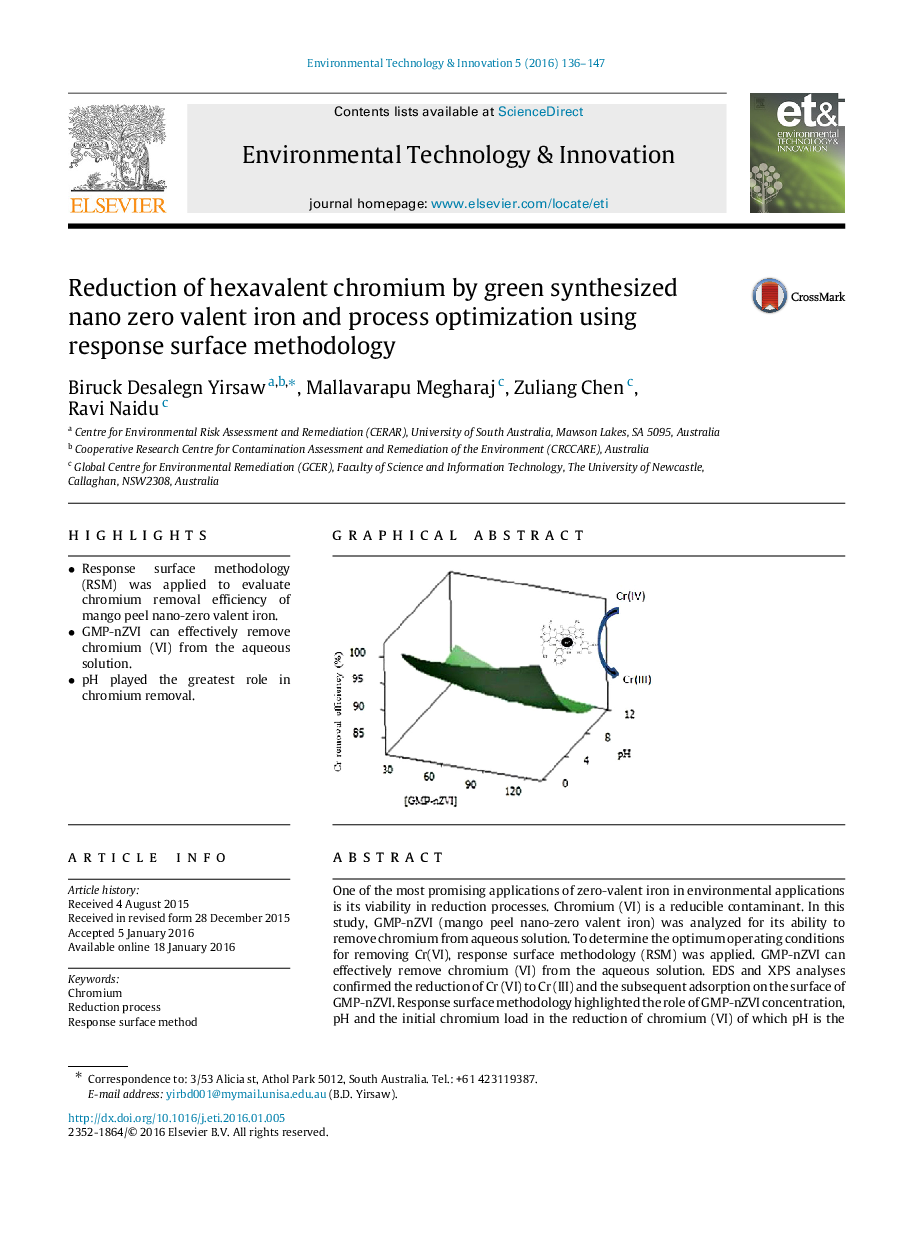| Article ID | Journal | Published Year | Pages | File Type |
|---|---|---|---|---|
| 4428202 | Environmental Technology & Innovation | 2016 | 12 Pages |
•Response surface methodology (RSM) was applied to evaluate chromium removal efficiency of mango peel nano-zero valent iron.•GMP-nZVI can effectively remove chromium (VI) from the aqueous solution.•pH played the greatest role in chromium removal.
One of the most promising applications of zero-valent iron in environmental applications is its viability in reduction processes. Chromium (VI) is a reducible contaminant. In this study, GMP-nZVI (mango peel nano-zero valent iron) was analyzed for its ability to remove chromium from aqueous solution. To determine the optimum operating conditions for removing Cr(VI), response surface methodology (RSM) was applied. GMP-nZVI can effectively remove chromium (VI) from the aqueous solution. EDS and XPS analyses confirmed the reduction of Cr (VI) to Cr (III) and the subsequent adsorption on the surface of GMP-nZVI. Response surface methodology highlighted the role of GMP-nZVI concentration, pH and the initial chromium load in the reduction of chromium (VI) of which pH is the greatest contributor (61%). Compared to the commercial forms of nanoparticles, GMP-nZVI indicated improved efficiency in removing Cr(VI), suggesting the role of surface structures in protecting against corrosion.
Graphical abstractFigure optionsDownload full-size imageDownload as PowerPoint slide
